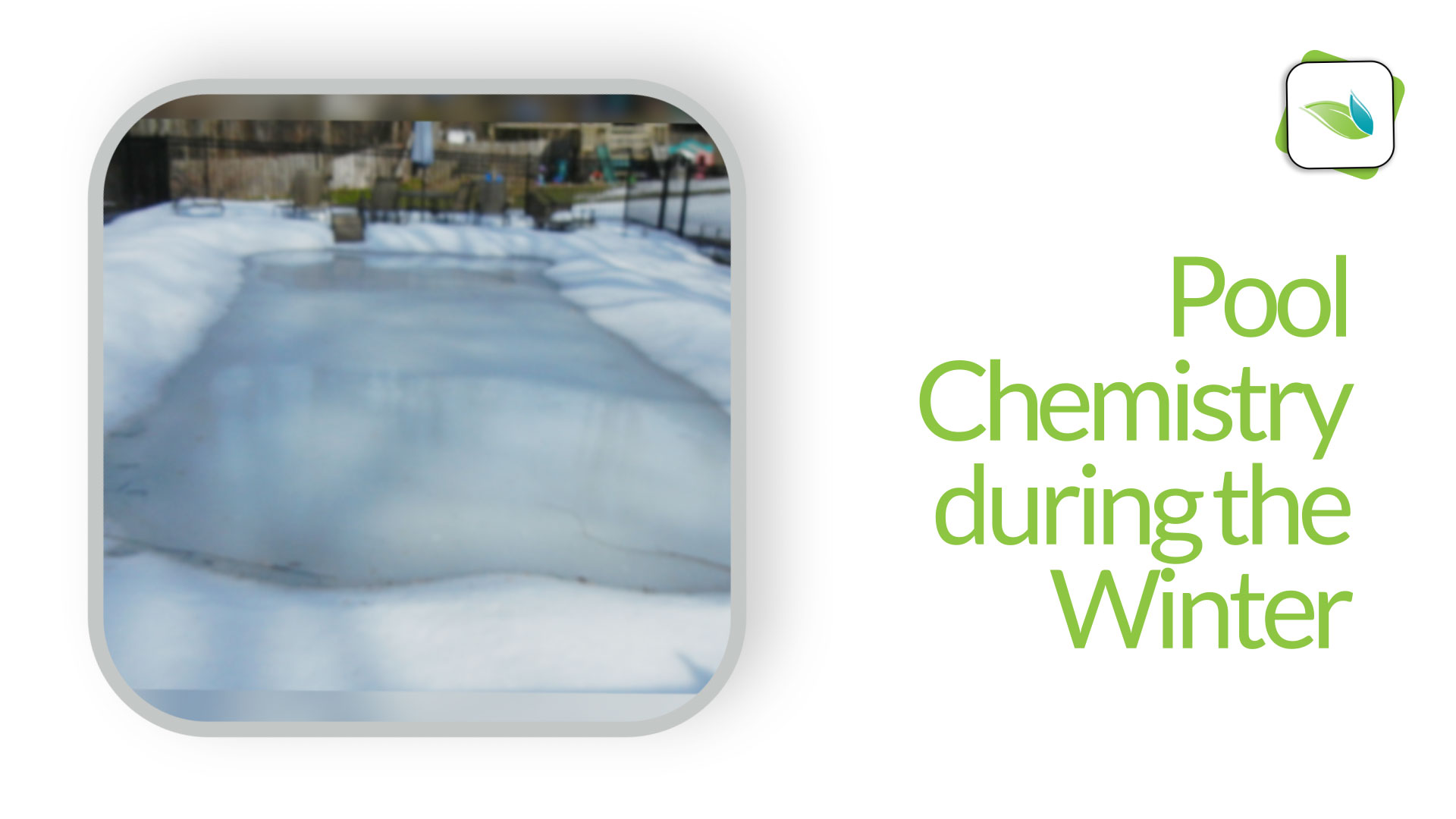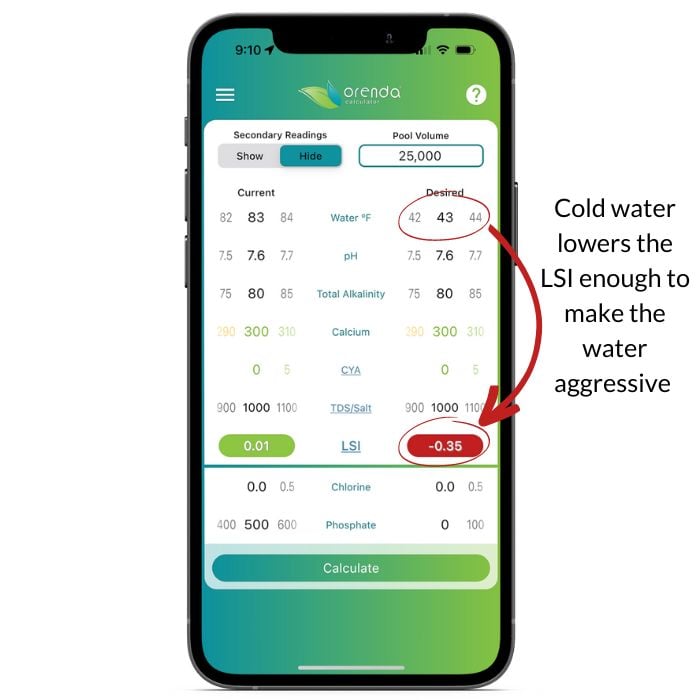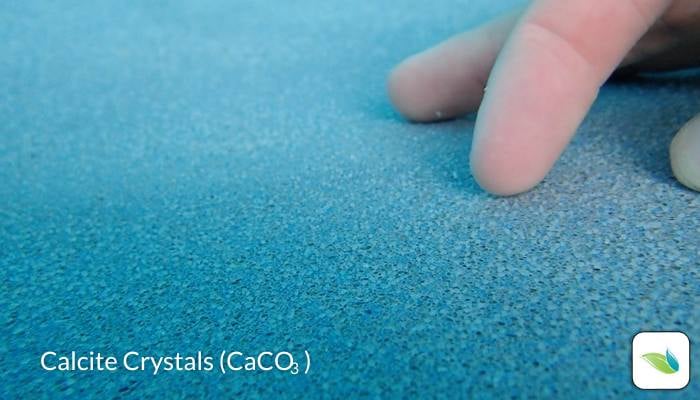Pool Chemistry During the Winter

This article aims to shed light on what really goes in a pool that is winterized. When the temperature drops, chemistry changes. Pools must be treated differently in the winter than they are in the summer, You can read our primary article about Proactive Pool Winterization here.
Winter Water Temperature
If your climate requires pool winterization, this article is for you. When do you winterize your pool...September? October? Later? More importantly, how do you leave the water chemistry before putting the winter pool cover on? And do you treat the water throughout the winter?
When we ask these questions to the pool service industry, we get a wide range of responses. But overall, it seems like most pool service techs don't come back until it's time to remove the winter pool cover and open the pool for the season. At best, this practice is a missed opportunity; at worst, it's a liability. Pool winterization is something that we as an industry can be much, much better at. If you would like to hear my two cents on the matter, keep reading.
"I'm Just Following Industry Standards"
The question is: What is the water chemistry that we leave behind after pool winterization? Are we just following industry standards like usual? You know, range chemistry; the same way you would treat the water during the summer season.
As a fellow pool professional--since 1984--I know what I'm about to talk about cuts against the grain. As pool professionals, we have been trained to manage water chemistry by "industry standard ranges". The goal of this concept is to maximize chlorine efficacy and water clarity; our two top priorities when the pool is open. After all, we're managing water people submerge themselves in! Of course it needs to be safe from disease, and of course it should look clean and clear.
But where do sanitation and water clarity apply to pool winterization? Are people swimming under the winter pool cover? No. The priority for closed pools should be water balance--based on the saturation index--and then chlorination and water clarity. Just following industry standards after pool winterization is virtually guaranteeing permanent damage to the pool.
Related: Cold water and the LSI
The relationship between water temperature and sanitization
As the water temperature rises, so does the sanitizer demand. Not only are living organisms more active in warmer temperatures, most chemical reactions occur faster in warmer water too. Below 55ºF, sanitizer demand is much less than say, 85ºF. I say this from personal experience.
We cannot ignore sanitization below 55º, but let's be honest. Keeping a pool algae-free in the winter is much easier than in the summer. I'm here to tell you that temperature is a major reason why.
As water temperature declines, so too does the speed of chemical reactions. Take for example an Orenda product like CV-600 enzyme. Enzymes are reactive beginning at approximately 65ºF. Below 65, they slow down and go dormant. Cold water negatively impacts chemicals with the exception of calcium, which is exothermic.
So let's take water temperature into primary consideration for pool winterization. We should always pre-dissolve and circulate dry chemicals when the water is still warm enough to do so. If you need to add calcium or bicarb to prepare your water's LSI for pool winterization, do so weeks before closing when the water is warmer. Ensure full mixing occurs and no undissolved material stays on the pool floor.
Pool specialty chemicals work better in warm water
I suggest that phosphate removal treatments occur a week or two before pool winterization for two reasons. First and foremost, let's give the reaction time to complete, and time to clean up the precipitate that falls out. Second, related to water temperature above, the reaction will be slower in cold water. So get it in before the water is too cold to do so.
The same goes for using SC-1000 or any other type similar chemical. It is a common industry practice to add a sequestrant during pool winterization. I question this practice due to water temperature. In our experience, SC-1000 is better applied in the spring during pool openings rather than pool winterization. Most of these chemicals cannot activate below 60ºF.
Industry-standard ranges should take a back seat to LSI balance during pool winterization
 When you use the Orenda LSI Calculator, adjust the temperature dial down to winter temperatures. You should notice a problem. See how the LSI goes down? The same "industry standard" water chemistry ranges will not protect your pool in the winter. In fact, it virtually guarantees severe surface damage over time...regardless of what type of pool you have. Water is relentless in its demand for equilibrium.
When you use the Orenda LSI Calculator, adjust the temperature dial down to winter temperatures. You should notice a problem. See how the LSI goes down? The same "industry standard" water chemistry ranges will not protect your pool in the winter. In fact, it virtually guarantees severe surface damage over time...regardless of what type of pool you have. Water is relentless in its demand for equilibrium.
Related: LSI Balance and Calcium Management (Pillar 1)
Pool winterization can wait a few more weeks
Since we have established that water temperature is such a critical factor in the LSI...why are we closing pools in September? In some cases, October can have nice, warm weather. Yes, even in the American Northeast and Midwest. Perhaps a strategy to consider would be to postpone pool winterization until late October. This does a few things...
- Allows for a longer season of pool use and enjoyment
- Lower closing temperatures (less chemicals required to adjust for the upcoming winter)
- Increased revenue for pool service companies
If we are just a bit more patient with pool closings, the water will be closer to its winter temperature. If you wait too long, the water will be too cold (as discussed in detail above), but find a time that works for you. Stretch that season a few more weeks, and I believe it will benefit the customer and your service company.
Pool Crystals
We have come to witness a big problem in colder climates: calcium crystals. These crystals form on cement surfaces like plaster and tile grout. So many people thought this was scale, but in fact, it's the opposite problem of scale. These crystals form in very low LSI, cold water. These calcium crystals are an extreme form of etching...you can literally see how much calcium has been extracted from your pool surface or grout. Using acid to lower the pH is the exact opposite of what should be done because it lowers the LSI further.
Fortunately, we have had tremendous success in preventing this problem, and with certain types of crystals, we can even remedy the situation in the spring. That said, staying proactive is always preferred.
- Balance the LSI of the water
- Purge the pool with 32oz of SC-1000 per 10,000 gallons of water. SC-1000's pH does not lower the LSI, it actually helps raise it, while gently breaking down calcite into solution.
- Continue using SC-1000 weekly and maintain slightly negative LSI-balanced water (-0.30 to 0.00, so the LSI value is yellow on the Orenda App calculator) until the crystals are gone.
Simplified best practices
If you have these calcium crystals, it means your water is hungry for calcium and low on the LSI, so test your water and if necessary, increase your calcium hardness. We recommend at least 400 ppm calcium to give you some grace in colder water.
Conclusion
- Consider extending the pool season into October if you can. It gives the pool more time to be used, and less time to be closed. It improves pool ownership value and can increase service company revenue too.
- Cold water is the factor we have to adjust for in pool winterization. It slows chemistry, lowers sanitizer demand, and most importantly, lowers the LSI.
- Remove phosphates at least a week before pool winterization so you have time to come back and vacuum, and clean the filter.
- Purge with CV-600 when the water is still above 65ºF. It is very helpful to do a deep clean of the inside of the pipes before clearing the lines and lowering the water level.
- Do not over-chlorinate at the end of the season. 3-5ppm should be plenty, as the sanitizer demand is only decreasing as the temperature drops. Besides, nobody is swimming under the pool cover.
- If you winterize pools, we recommend 400ppm calcium. Use the Orenda LSI calculator to manage it. You will find it's a valuable ally, especially in the winter.
For more information or specific questions, contact us. Thank you for your time.

